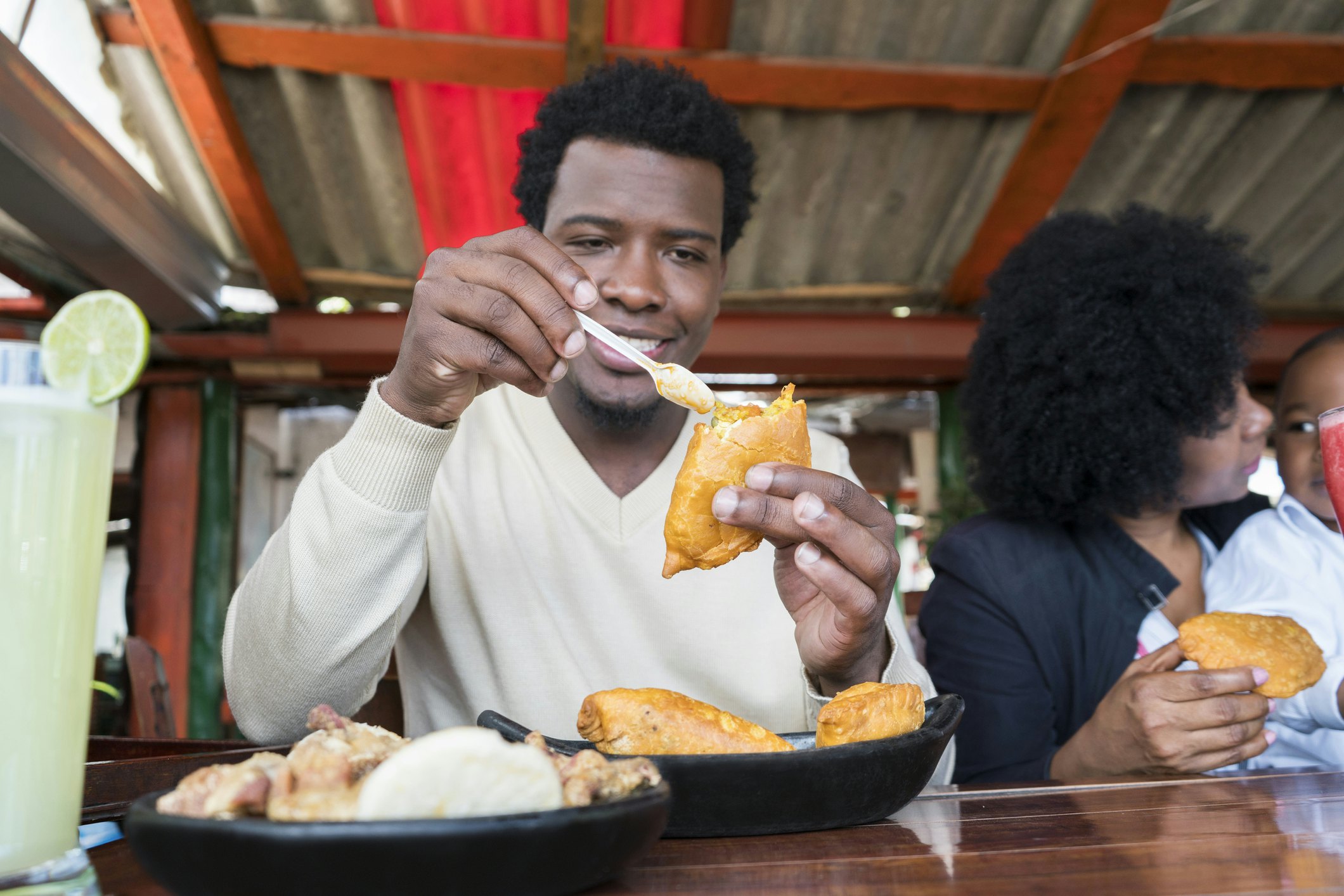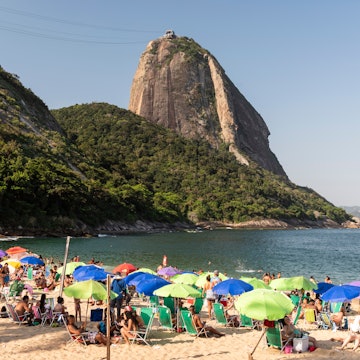

Taste the best flavors of Colombia with this guide to the country's top dishes © RECVISUAL / Getty Images
Inspired by age-old indigenous and European influences, Colombian cuisine reflects the incredible cultural and geographic diversity of the country with delectable regional specialities found in both the mountainous interior and along the coastal plains.
While preparations vary greatly between destinations, one common factor is that meals are always prepared with plenty of farm-fresh produce, a reflection of the country’s productive climate and incredibly fertile lands.
With two very different coasts and a multitude of rivers flowing down from the mountains, there’s plenty of fish and seafood to be sampled while there is no better way to finish a meal than to sample some of the country’s extraordinary variety of fresh fruits – many of which never grace the shelves of grocers in other parts of the world.
Here are the best foods to try in Colombia.

Bandeja paisa
Originating in Antioquia but now enjoyed all over the country, this belly-bursting paisa platter is a high-calorie feast designed to keep hardy rural folk working in the mountains all day. If you’re not out picking coffee or cutting lumber you might find it over the top but there’s no denying it’s delicious.
According to purists, a real bandeja paisa must include 10 ingredients: rice, beans, pork rinds, ground beef, sausage, egg, black pudding, avocado, grilled plantain and arepa. And, curiously, it should only be served on an oval-shaped plate.
Where to try it: Hato Viejo in Medellín.
Hormigas culonas
One of Colombia’s most interesting culinary traditions has its origins in the pre-Hispanic indigenous communities of Santander who harvested giant flying ants as a readily available source of protein.
Eaten as a snack, hormigas culonas – literally fat-arsed ants – are toasted in a pan over an open flame. Only the females are eaten, the males are too meager to bother about. To many they taste a bit like coffee grounds with a dash of dirt but to others they are the caviar of the Andes. Buy a packet and decide for yourself.
Where to try them: Elvia in Barichara prepares gourmet sauces with ants and even smoked-ant flavored butter.
Cazuela de Mariscos
Popular on both coasts, this rich dish of mixed seafood in creamy coconut sauce is not going to help the diet but will get your tastebuds dancing. Most versions include fish, shrimp and squid but many other delicacies can make an appearance.
It’s usually served with fried green plantain and lemonade sweetened with panela to cleanse the palate.
Where to try it: Galeria Alameda market in Cali.

Tamales
Another dish with strong indigenous origins, the unassuming tamal is perhaps Colombia’s most underrated gourmet surprise. Made of spiced maize meal with meat and vegetables cooked in a tightly wrapped banana leaf, it doesn’t look like much at first glance, but once you pull the string and fold back the natural packaging you’ll be immediately sold by the wonderful aroma.
In a well-prepared tamale the juices from the meat and vegetables seep into the base but it remains firm and not soggy. There are many tamale variations around the country but the best are those originating from Tolima department. Traditionally enjoyed in the morning, they’re an equally good midday meal.
Where to try it: Tamales Tolimenses del Viejo Felix in Bogotá.
Sancocho
The king of Colombia’s many soups, sancocho is a slow-cooked hearty dish with any of a number of meats, plantain and cassava.
Ideally cooked over a smokey wood fire, a great sancocho is neither thick nor watery and has a rich rust-like brown color. Classic versions include sancocho de gallina made with a free-range hen and sancocho trifásico featuring pork, beef and chicken. Lighter versions made with fish are also popular.
Where to try it: Hacienda Origen in Medellín.
Arepas
Nothing divides opinion among visitors to Colombia quite like the humble arepa. Pretty much omnipresent at mealtimes and also a popular quick snack, these grilled flat cakes of maize come in endless varieties.
Don’t judge them on the inedible cardboard-like industrial horrors served with fast food, but rather seek out toasty arepas Santanderenas in which yellow maize flour is mixed with ground pork rinds or sweet arepas de chocolo, that are best enjoyed with fresh white cheese.
Where to try them: Restaurante Gallineral in San Gil for great arepas Santandereanas.
Helado de paila
Made in front of your eyes in a bronze bowl sitting on a large block of ice, helado de paila is a delicious ice cream found in the far south of the country. With just a handful of all natural ingredients, the main being creamy fresh buttermilk, it’s about as wholesome as ice cream gets.
It’s said the first versions were made on blocks of ice brought down from the mountaintop glaciers. These days the ice is supplied by wholesalers, but the technique remains the same as generations gone by.
Where to try it: Look for the carts outside schools in Pasto and Ipiales.

Empanadas
A favorite snack among all walks of life, the empanada is Colombia’s best loved street food. A fried maize pastry filled with meat and served with a vinegary hot sauce, they’re served from little carts and hole-in-the-wall fry shops across the country and are commonly eaten as a mid-morning snack or while boozing, but they are good at any time.
Where to try them: El Zaguan de San Antonio in Cali.
Ajiaco
Bogotá’s best known dish, ajiaco, is a creamy chicken and creole potato soup flavored with capers and wild mountain herbs that has its origins in colonial times and is ideal for warming up on chilly afternoons in the capital.
It’s packed with nutrients and is considered one of the healthiest of the country’s traditional dishes. If you enjoy it, try another famous Bogotano soup for breakfast, the milky, herb-infused changua.
Where to try it: La Puerta Falsa in Bogotá.
Vegetarians and vegans
While on the increase, vegetarianism remains a fairly fringe movement in Colombia, with only around 5% of the population shunning meat products. However in even medium-sized cities there are generally a few dedicated vegan and vegetarian restaurants and most good Colombian restaurant chains have several vegetable-based mains and meat-free options clearly marked on the menu.
In rural areas the going can be tougher, however with an abundance of fresh fruit and vegetables on offer there are many worse places to travel for herbivores. Beans, chickpeas and other legumes are served with meals at simple restaurants around the country, but they are often flavored with meat stock so be sure to check before ordering. Many street snacks are veg-friendly although they tend to be cheesy so vegans might have a tougher time.
















